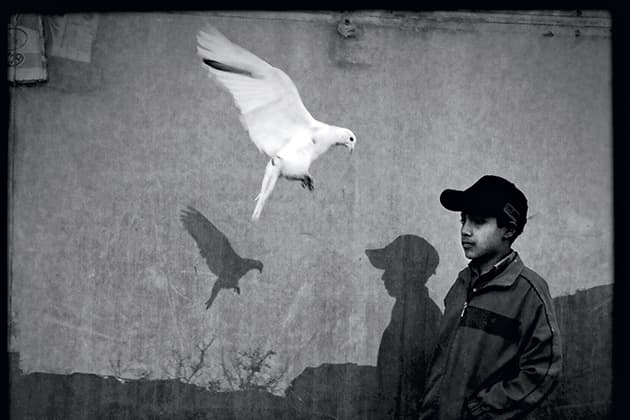
An image that combines the many elements that make a successful shot for Shams – light, shadow, subject and timing.
With smartphones so prevalent in our everyday lives, you would expect that most of us would have all but embraced the notion that great photography can be captured easily with these pocket- sized devices. However, there are a large number of people out there who are still troubled by the idea that the images produced by smartphones can be considered ‘real’ photography. That said, it’s worth bearing in mind that there are plenty of people who refuse to class digital as ‘true’ photography. You just can’t keep everyone happy.
If you can get past the idea that smartphone photography simply exists to serve the insatiable appetite for selfies, photographing your lunch or surreptitiously photographing a celebrity with no make-up on buying an egg mayonnaise sandwich, then you’re some way to identifying the true value of the genre (if we can apply such a broad term).
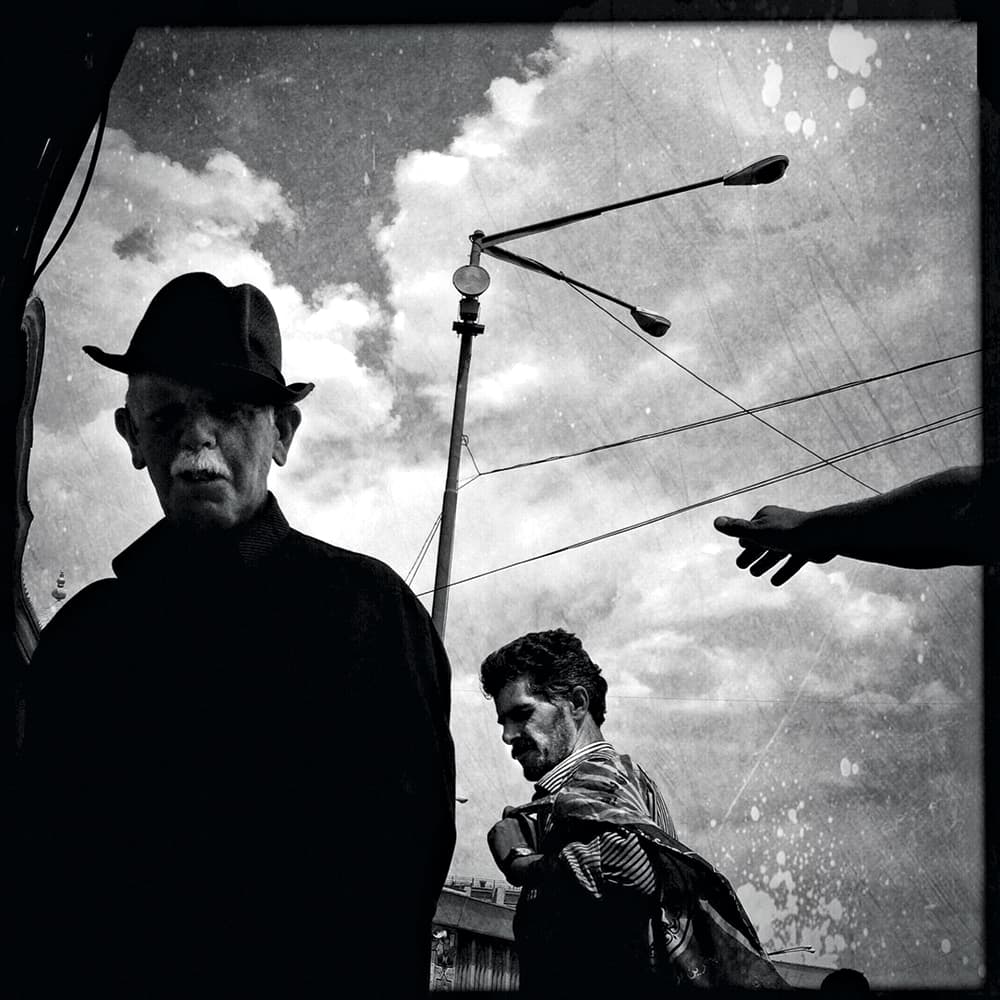
Here we see how Shams enjoys using the square frame of the iPhone camera to create unusual compositions.
More and more, we are seeing that where smartphone photography truly wins is in the field of street photography. Such a large part of this genre requires the photographer to remain invisible. Only then can they capture the candid scenes that are the staple of the style. Shooting with a smartphone allows the photographer to hide in plain sight. Smartphones are such a common sight on the streets, we don’t think twice when we see them. In this way, a photographer can easily travel the streets snapping away.
One of the current best examples of smartphone street photography is by Iranian photographer Ali Shams, whose gorgeous black & white images are little masterclasses in how to best capture street scenes. His work is reminiscent of another contemporary master of the genre, Richard Koci Hernandez, a leading iPhone photographer who, similar to Shams, enjoys rendering the world in stark tones. In this way, we as the viewer are afforded more of an opportunity to focus on the form and content of the image. We see something familiar rendered as something quite unusual.
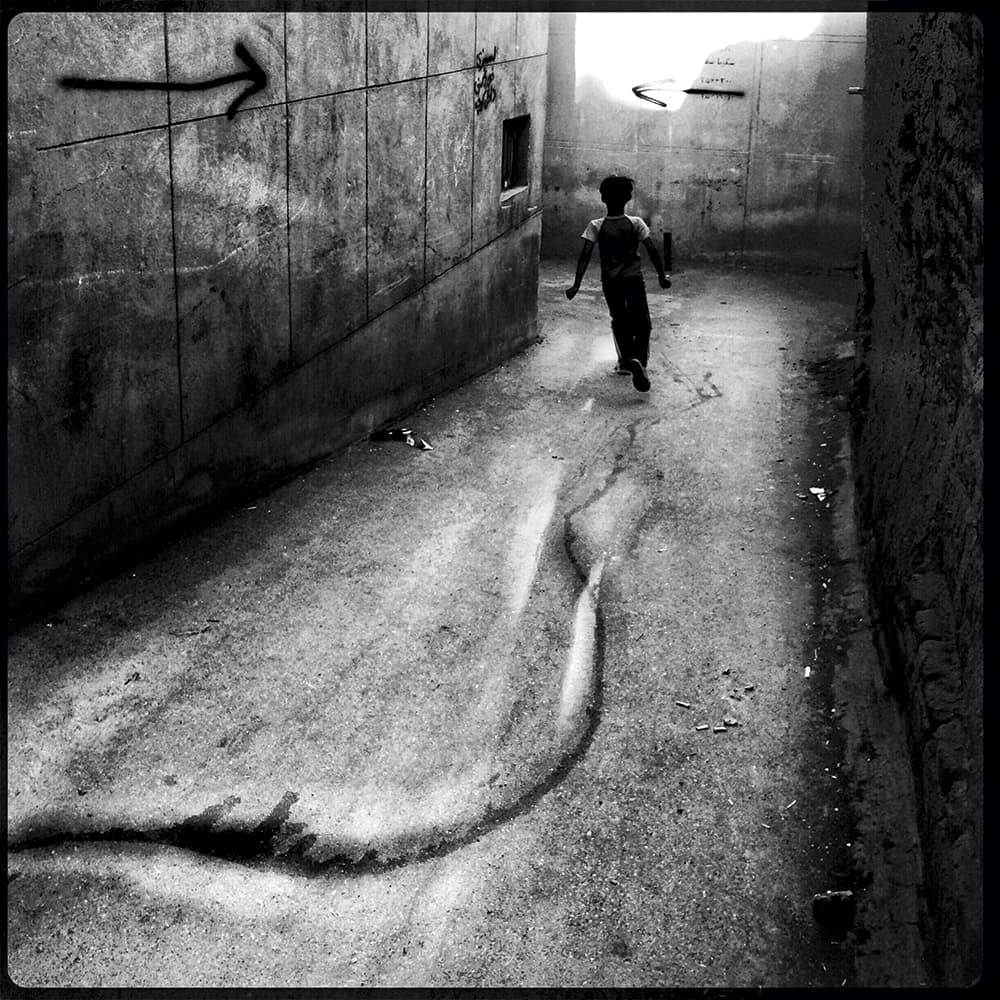
Many of the shots seem to hint at a story, such as in this image of a boy in an alley who seems to be led by a graffiti arrow.
‘I think my love of black & white photography really stems from my interest in black & white movies,’ says Shams. ‘But what I really find when I’m shooting black & white is that it gives some distance between the real world and the world as I see it. By shooting in this way, I can represent things in a much more abstract manner. It gets closer to my own viewpoint. Colours just don’t work for me. Having said that, I will on occasion take colour images just to circumvent any monotony that may arise from shooting black & white exclusively.’
Shams is someone who has always had a keen interest in the visual. Since childhood, he has been fascinated by mediums such as comic books and painting. Later he developed a passion for cinema and immersed himself in the art form. Eventually, Shams settled on architecture as his primary love and pursued a bachelor’s degree in the subject at the Imam Khomeini International University of Qazvin in Iran.
It was around that time that he signed up for a basic photography workshop, expecting simply to become a little more familiar with the gadgets on offer. However, he soon found the mediums of architecture and photography to be complementary. This shouldn’t be too much of a surprise. If you look through Shams’ work, you can clearly see the methodical approach he takes to capturing shape and form. He actually identifies the first time he held a camera in his hands as ‘magical’. It was a tool for communicating in a simple, clear and quick way. It was exactly what he wanted.
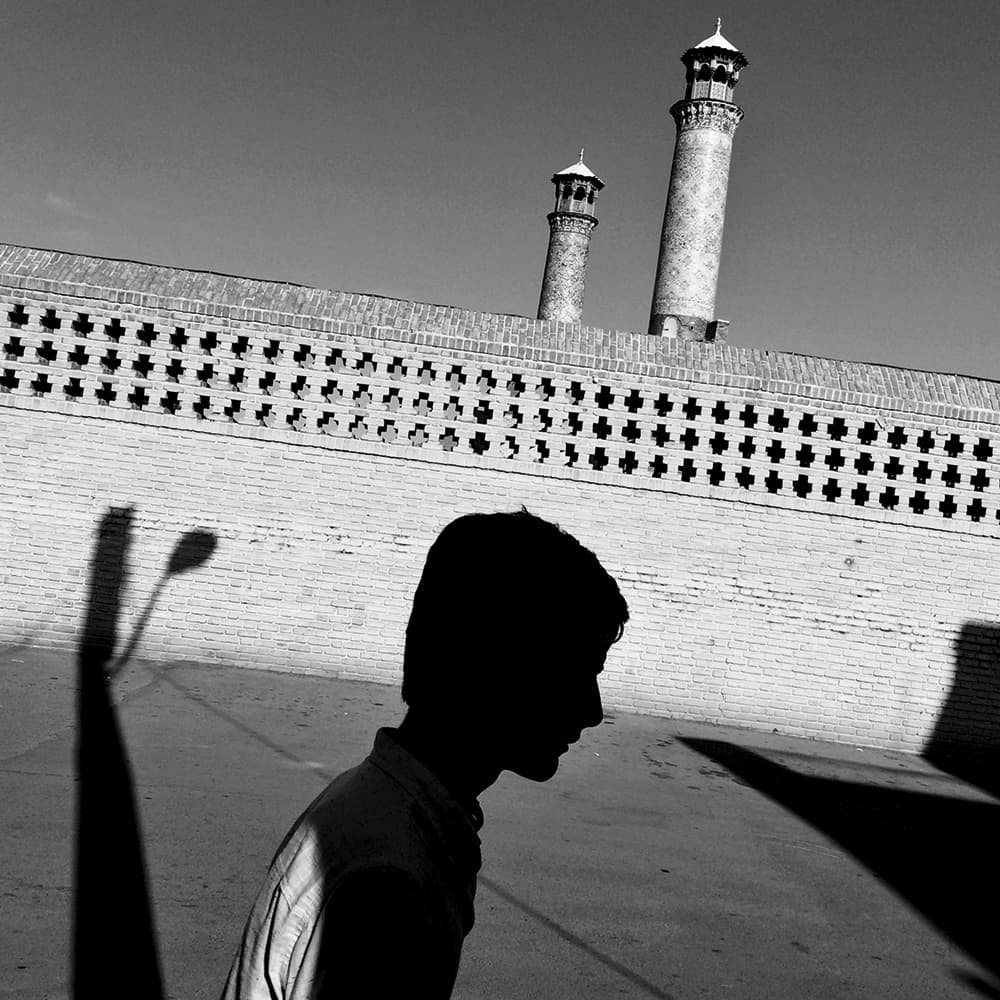
The contrasts between light and shade are a key visual element in Shams’ work.
Into the light
Shams has been shooting with an iPhone since 2014. Having that small device lodged in his pocket meant that the idea that he could take a photograph any time he wanted was always on his mind. On top of that, the convenience of the device’s simplicity was terribly appealing.
‘Smartphones are so easy to use,’ says Shams. ‘With just one touch of your finger you have a photograph. With such a simplistic interface you can, if you choose, get rid of technical options like the shutter speed and aperture, and instead concentrate on the subject, the graphical composition and the lighting. As I began using the iPhone, the rate of production was increasing and I could easily approach people on the street without alerting them to the fact that I was taking their picture. This all resulted in the images and poses of the subjects being a lot more natural.’
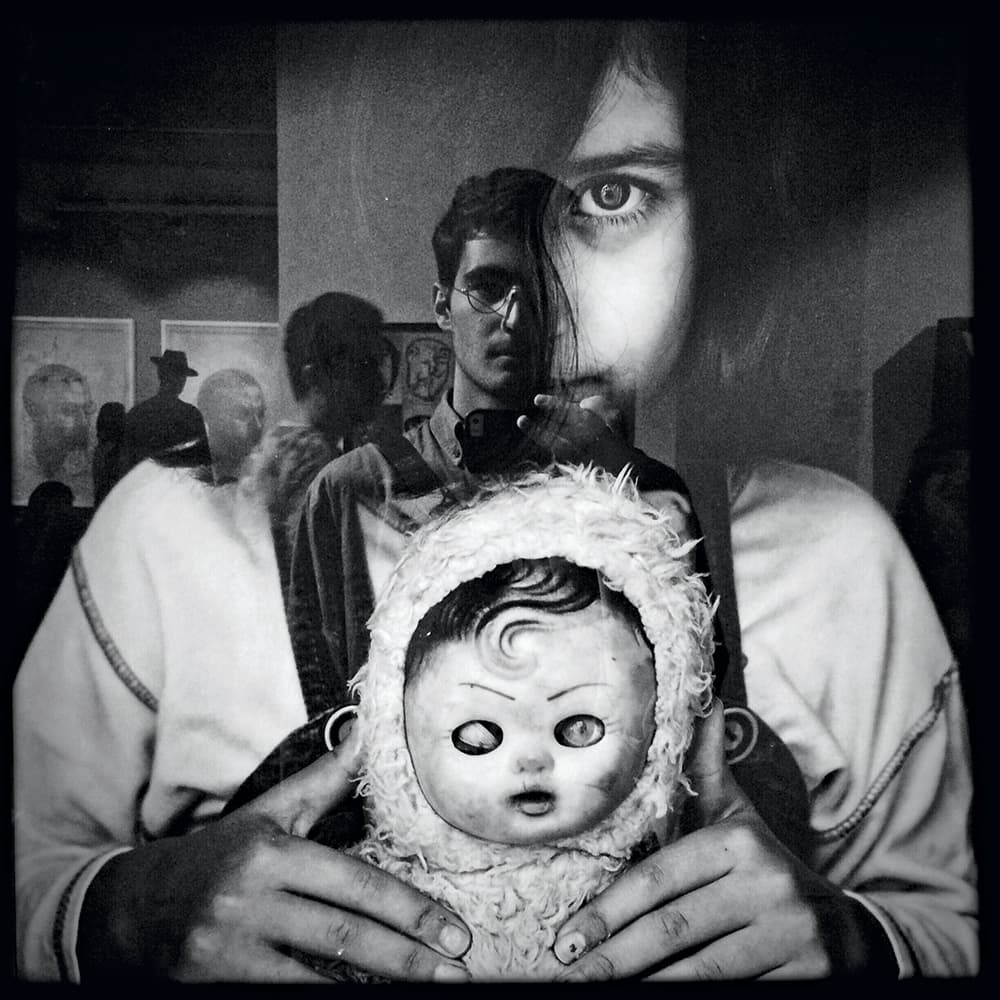
A rare foray into the world of self-portraits, with Shams’ particular visual spin.
It’s worth noting that Shams simply uses the iPhone’s native camera app when he shoots, which offers basic exposure settings as well as burst mode, a necessary feature considering many of Shams’ images feature his subjects dashing through the frame. But as you can see, it’s not just about the subject with Shams’ images. It’s about the tonal contrasts that in some cases have been stretched to within an inch of their lives. Living in a country such as Iran offers Shams the luxury of strong sunlight versus deep, dark shadows. It allows him to wallow in his clear love creating silhouettes by knocking the exposure down a few marks and exposing for the highlights of his scenes.
‘I’m not a photographer who really cares about shooting at times like the “golden hour”,’ says Shams. ‘On a typical day, I’ll go out and analyse my position in relation the sun. That allows me to make some guesses as to where the sun will be at certain times of the day and where I need to be in order to best exploit that light. I always work around the light and allow that to dictate my images.’ Once the image is taken, he can take the image over to a post- processing app – such as Snapseed, Hipstamatic and sometimes VSCO – and enhance the effects by tweaking the contrasts and shadow settings.
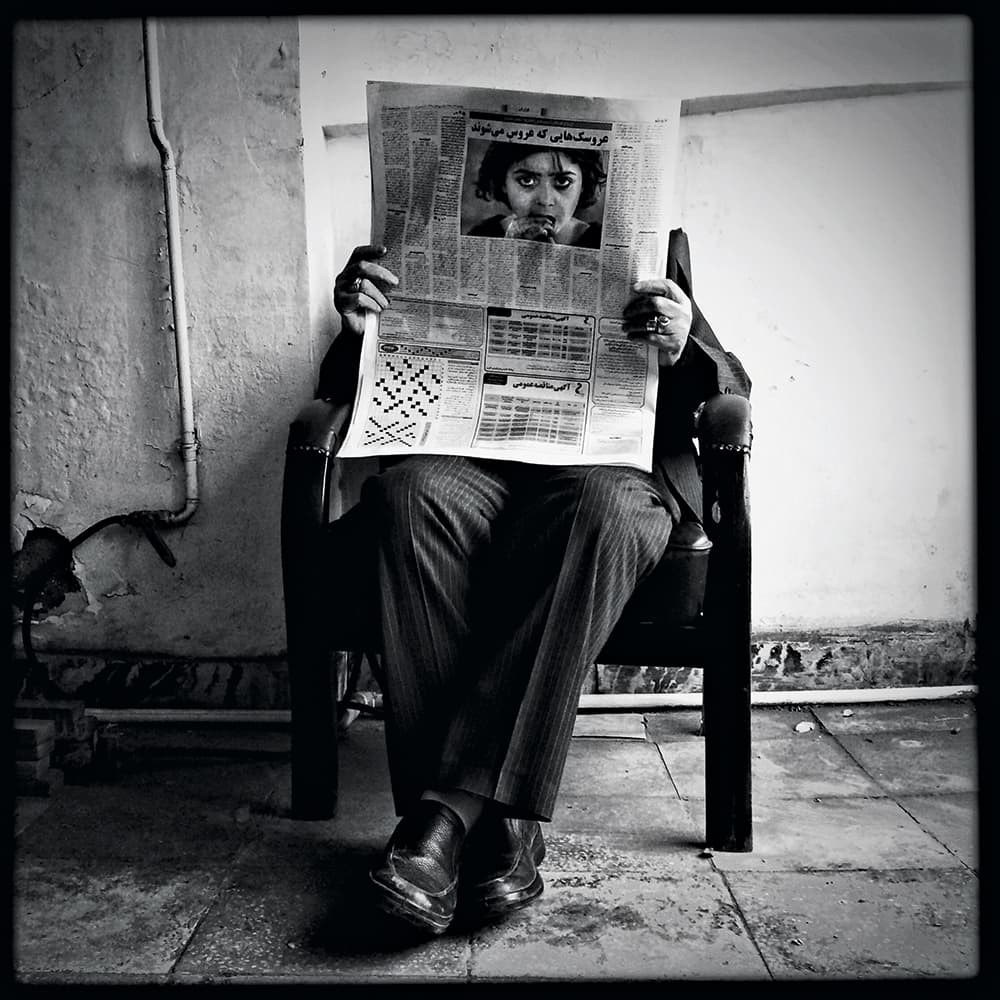
Shams sometimes likes to seek the juxtaposition of elements within a scene.
The comfort of strangers
One of the most striking projects that Shams is currently working on finds him entering the public bathhouses that can be found throughout Qazvin, where he lives with his family. It’s a series of images that really occupy that grey area between public and private as it applies to street photography. As a photography magazine, we get numerous correspondences from nervous would-be street
photographers asking if they are within their rights to capture someone’s image. This is the part of street photography that requires real confidence, and it’s something that Shams seems to have in spades. As mentioned, street photography requires the photographer to remain inconspicuous. However, when you’re in a bathhouse surrounded by naked men, that’s perhaps not quite going to work. In this arena, Shams takes a different approach from normal in that he chooses to interact with his subjects and let them know his intentions.

Iran’s social bathhouses form a large part of Shams’ latest work.
‘The encounters and feedbacks are generally so positive, that the people I’m photographing actually want to continue the dialogue after I’ve finished shooting,’ says Shams. ‘It’s all about positivity. I’m not looking to make anyone look bad. Under normal circumstances, on the street, people remain unaware of me. I’ve never encountered any bad or angry reactions, and I’m sure I never will. The way I see it, I’m just looking to take someone’s picture. I don’t see how anyone could get angry about that.’
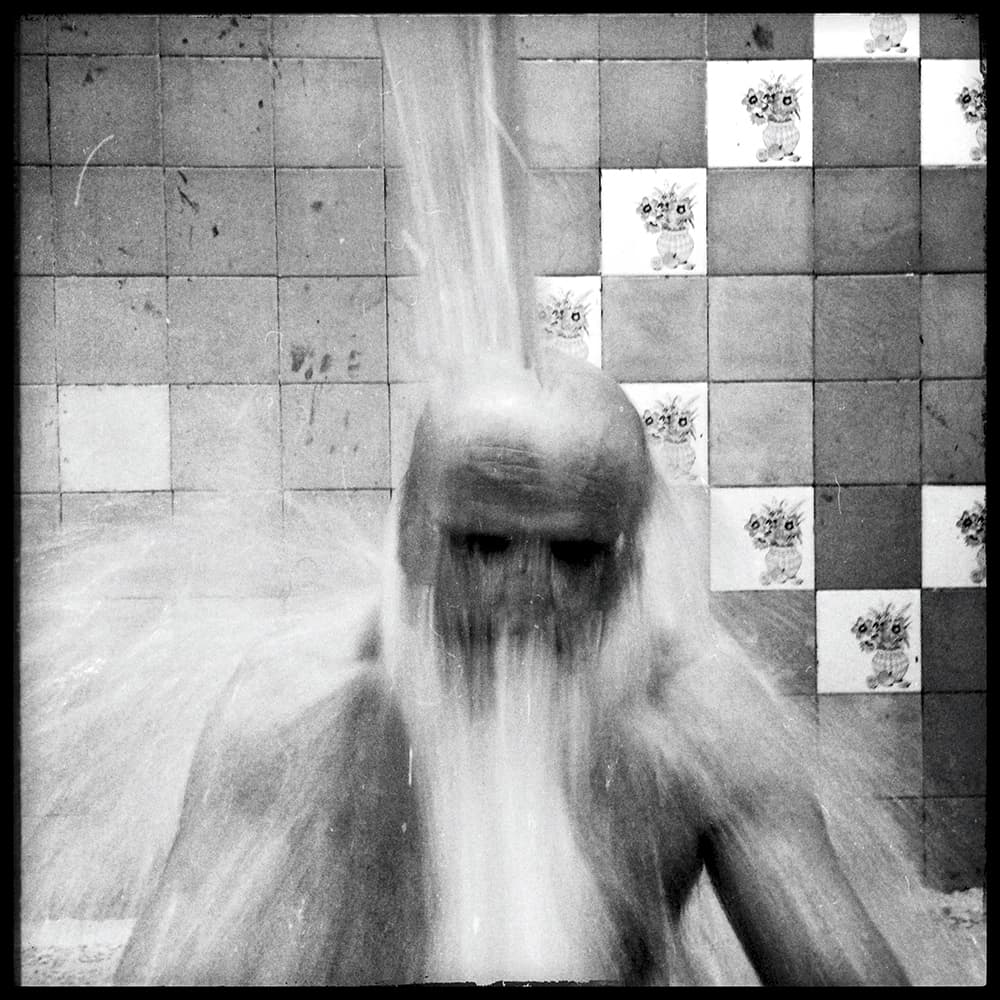
Another of his bathhouse images, this time a little more close up.
The audience for Shams’ work is growing. He’s becoming more and more known within the field of iPhone and street photography, and, at the time of writing, has more than 41,000 followers on his Instagram page. The reason, perhaps, is that Shams’ work feels so current. It’s contemporary in its method of execution, but it also features a tinge of nostalgia in its use of app filters to give the images an old-school film feel. It’s that blending of old and new that makes the images so interesting, not to mention his masterful approach to light and form. So if you’re still unsure as to whether or not smartphones can produce quality photography, this could well be a fine place to start looking.
Ali Shams is based in Qazvin, where he lives with his family. He has studied architecture and is now making a name for himself as a photographer. You can view more of his images at www.instagram.com/ali.shms

